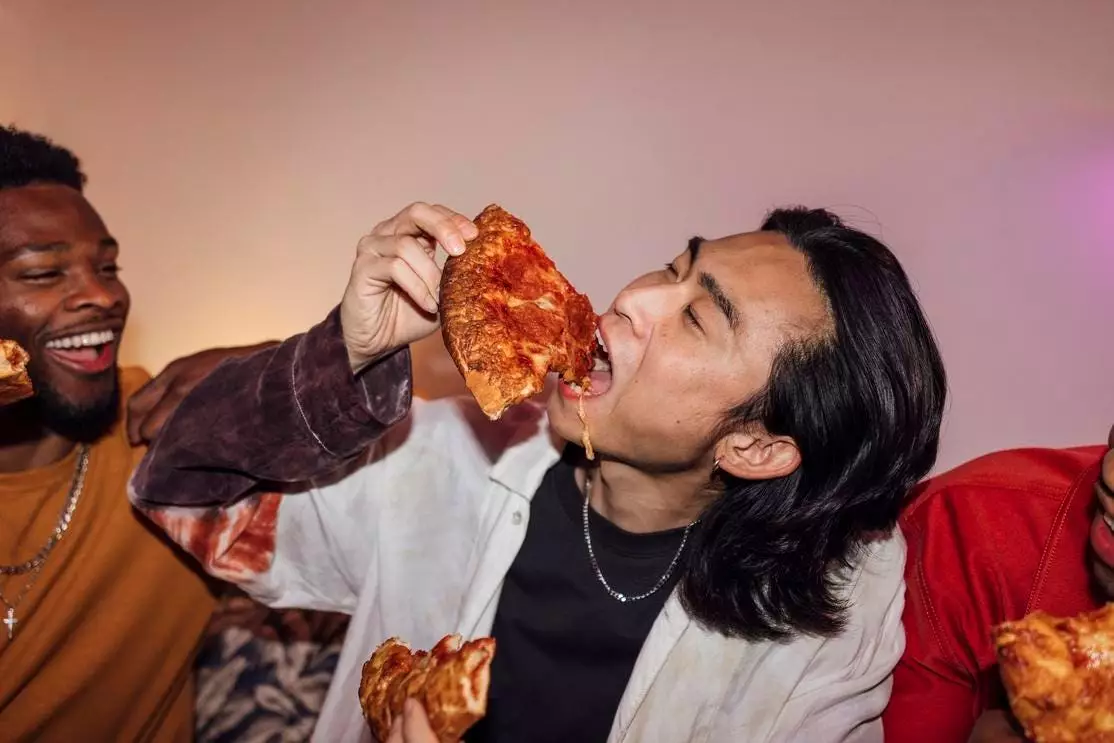Cannabis culture is evolving, and so are its effects on our bodies and eating habits. The phenomenon commonly known as the “munchies”—an insatiable craving for salty, sweet, or fatty snacks following the consumption of cannabis—is often dismissed as a light-hearted joke or meme. However, intense craving for food isn’t merely anecdotal; it’s deeply rooted in biology. Understanding this connection casts insight into how our relationship with food and desire is intertwined with our consumption of cannabis.
The Science Behind the Munchies
Scientific research provides a crucial window into understanding why the munchies occur. According to a pivotal study published in *Nature Neuroscience* in 2009, compounds found in cannabis, primarily tetrahydrocannabinol (THC), interact with the brain’s endocannabinoid system. This complex network manages numerous physiological processes, from mood regulation to appetite. When THC activates this system, it enhances our senses of taste and smell, making food not just more appealing but almost irresistible. The heightening of these sensory experiences can easily bypass our internal cues telling us when we are full. Furthermore, THC boosts levels of ghrelin, a hormone that dramatically increases appetite and urges us to seek out food.
In essence, the munchies represent more than mere hunger; they epitomize a dramatic amplification of our sensory perceptions coupled with biological cravings urging us to indulge. Yet, it doesn’t end here. The interaction of cannabis with our neurological reward systems is equally compelling. A study published in 2019 in the *Journal of Psychopharmacology* suggests that cannabis increases dopamine levels in the brain’s striatum, a region integral to reward-seeking behavior. The after-effects of cannabis elevate simple food consumption into a gratifying experience, creating an enticing cycle of desire that can be vivid and difficult to resist.
Cultural Context: Food, Cannabinoids, and Cravings
Today, the munchies culture reflects larger societal trends, anchored in accessibility and emotional comfort. With the rise of cannabis’s mainstream acceptance, cultural attitudes toward food consumption have changed dramatically. Holidays such as April 20th (4/20), once a niche celebration for cannabis enthusiasts, have transformed into significant culinary events where indulgence reigns supreme. Fast food brands often step up their game, crafting ultra-cheesy nachos and colossal burgers aimed squarely at those experiencing post-cannabis cravings. The emergent vocabulary surrounding such food has evolved into an emotional comfort zone—comfort food not just in flavor but also in experience.
Fast-forward to 2025, and the dining landscape mirrors our rapidly changing cultural context. According to a recent Tastewise survey, approximately 75% of Americans indulge in fast food at least weekly, with younger generations like Gen Z and Millennials reported to be consuming it even more frequently than before. Convenience triumphs as the driving force behind food choices. Thus, when cravings hit, we instinctively reach for satisfying, readily available options—snacks that require no preparation and evoke comfort.
The Shift from Stigmatization to Normalization
What’s remarkable is how cannabis use is increasingly recognized as part of our behavioral landscape. The latest data from the World Health Organization (WHO) even classifies it within the same framework as fast food consumption and other lifestyle choices. This evolution indicates a larger societal shift—cannabis is no longer framed as a taboo but as a measurable and normalized behavior. This perception shift, as shown in Gallup statistics revealing that 16% of U.S. adults used cannabis in 2022 compared to just 7% in 2013, showcases a clear generational evolution in attitudes toward weed.
Fast food chains are keenly aware of these cultural transitions and are aligning their offerings to resonate with contemporary preferences. Without necessarily confronting the topic of cannabis directly, brands craft enticing options tailored for late-night cravings. The designs often feature an amplified experience, larger portions, and enticing flavors, capitalizing on the notion that food consumption should be as sensational as it is satisfying.
Redefining Indulgence: The Broader Munchies Market
The surge in cannabis consumption reaches beyond just younger demographics; it spans a diverse spectrum of ages and preferences. A recent survey from GlobalData highlights an uptick in savory snacks, chocolate, and indulgent sweets, driven not only by younger consumers but also significantly by older Millennials and Gen X. This denotes a broader spectrum of indulgence that transcends age classifications, reshaping how we perceive cravings and satisfaction.
Critically, while cannabis undeniably enhances appetite, studies suggest it may not correlate directly with detrimental health outcomes such as obesity. In fact, some research posits a link between cannabis use and reduced risk of diabetes. This duality of indulgence incites contemplation regarding our eating habits as influenced by the munchies—a measure of personal and cultural satisfaction rather than sheer consumption levels. Thus, the munchies become an intricate interplay of seeking joy, comfort, and fulfillment rather than mere overindulgence.

